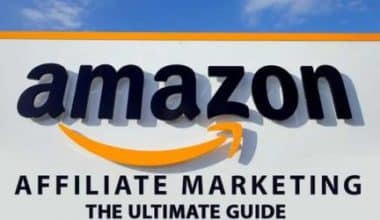This article aims looks at the meaning of marketing business and the strategies effective for marketing for small business.
What Is Marketing?
Marketing describes the actions a business takes to encourage the purchase or sale of a good or service. Advertising, selling, and delivering goods to customers or other businesses are all included in marketing.
What Is a Marketing Business?
Marketing business is the procedure for bringing products or services and potential customers together. Additionally, it can be defined as the activity of luring prospective consumers and clients to a good or service. Marketing and promotion specialists use research, promotion, advertising, selling, and distribution to capture target markets’ interest through celebrity endorsements, memorable slogans, packaging, and media exposure.
Note that:
- Marketing involves a business’s efforts to advertise and persuade customers to buy its goods or services.
- The marketing mix, including product, price, place, and promotion, is a tool used in marketing.
- Traditional strategies, like TV, radio, and word-of-mouth, are still widely used.
- Digital marketing can be used to implement affiliates, content, social media, and newsletters.
What Does A Marketing Business Do?
Marketing in business is the process of connecting potential customers with products or services, aiming to match the company’s offerings to their needs. Initially, it involved chasing customers with promotions without understanding their needs.
Today, organizations have dedicated marketing teams that develop strategies for selling quality products and services and perform tasks like market research, product promotion, and product distribution. They continuously introduce new plans to increase sales and their customer base.
What Are The 4 Ps Of Marketing?
#1. Product:
A product is an item or items a business plans to offer to customers, aiming to fill market gaps or meet consumer demand. Therefore, to create an effective campaign, marketers must understand the product, its unique selling points, its compatibility with other products, and the availability of substitute products.
#2. Price:
Price refers to how much the company will sell the product for. When creating a price, companies must consider the unit cost price, marketing costs, and distribution expenses.
Additionally, companies must also consider the price of competing products in the marketplace and whether their proposed price point is sufficient to represent a reasonable alternative for consumers.
#3. Place:
Place describes how the product is distributed. Whether the business will sell the product online, through a physical shop, or via both distribution channels is an essential factor to take into account. What sort of physical product placement will it receive when it is sold in a storefront? What kind of digital product placement does it receive when it is sold online?
#4. Promotion:
The fourth P, promotion, is an integrated marketing communications strategy that combines public relations, direct marketing, sponsorship, and guerrilla marketing.
Additionally, it varies according to the stage in the life cycle of the product and takes into account how consumers feel about price and distribution.
How Do I Build My Marketing Business?
#1: Develop the Necessary Skills
To succeed in the digital marketing industry, a solid foundation for managing accounts and client relationships is crucial. Work environments are complex, with expectations, communication, and politics influencing daily work.
Additionally, mastering digital marketing skills requires experience in clients’ environments. To start a career, work on a marketing team or with a small client base to learn channels, skills, and systems like Marketo and Salesforce.
#2: Take on jobs:
Working for yourself can be rewarding, but it comes with risks. To mitigate these, it’s crucial to develop a solid business foundation. Contracting work offers a taste of entrepreneurial life, while time management is essential. Building relationships as a contractor can lead to referrals and easier transitions into a one-person agency.
Additionally, managing clients as a side gig provides experience in contract building, building relationships, and negotiating service costs, which will become invaluable in the long run.
#3: Create the Right Business Model:
Setting up a digital marketing agency requires considering various pricing models, including hourly, flat retainer, percentage of spend, commission-based, and tax-based pricing.
- Hourly billing is ideal for one-on-one services but can become muddy over time.
- Percentage of spend pricing is popular but can be challenging due to internal factors and seasonality.
- Commission-based pricing is competitive but may be problematic for businesses with complex sales funnels.
Taxes and liability are also important considerations. Additionally, establishing an LLC or SCorp can provide legal security and tax benefits, while hiring a tax professional can save money.
#4: Define Your Niche:
Starting in the digital marketing industry requires a unique selling proposition. Focusing on a specific niche simplifies onboarding, strengthens skills, and gives a competitive advantage. Additionally, understanding customer needs and expectations helps make informed decisions and identify potential clients.
#5: Decide How You Want to Scale
Starting an agency or consulting firm can be challenging, requiring personal survival and a strong business understanding. It’s crucial to be skilled in the field and manage accounts yourself to refine your skills and find talented help.
Additionally, offering benefits and paying well can make employees more interested. Scaling up to full-time employees is cost-effective. Running a sustainable agency allows for personal growth and investment in other business models.
What Are The 7 Types Of Marketing Strategies?
Here are some current marketing strategies:
#1. Internet marketing:
The concept of having an online presence for business purposes is in and of itself a form of marketing and was first popularized by an online Excedrin product campaign.
#2. Search Engine Optimization:
The method of optimizing the material on a site so that it appears in the results of search engines is known as “SEO,” abbreviated. Therefore, marketers use it to attract customers who conduct searches that suggest they’re keen on learning more about a specific industry.
#3. Blog promotion:
Blogs are no longer just the domain of one writer. To create content about their industry and pique the attention of prospective customers who search the internet for information, brands now publish blogs.
Businesses can use social media platforms such as Instagram, Facebook, LinkedIn, and others to gradually make an impression on their audience.
#5. Print marketing:
Organizations continue to promote articles, photography, and other similar content in the publications that their customers read as magazines and newspapers get better at comprehending who subscribes to their print material.
#6. Search engine marketing:
Compared to SEO, which was previously discussed, this kind of advertising is slightly different. Now, companies can pay a search engine to put links on pages in its index that are highly visible to their target market.
#7. Video marketing:
Marketers now invest money in producing and publishing a variety of videos that both entertain and inform their core customers, as opposed to the days when there were only advertisements.
What Are The 2 Main Types Of Marketing?
#1. Traditional Marketing:
Traditional marketing is the process of reaching out to potential customers using traditional media like newspapers, magazines, billboards, television, and radio. This has existed for quite a while and is still in frequent use. Traditional marketing frequently costs a lot of money and only reaches a small audience. Additionally, it is unable to monitor the success of the campaigns.
#2. Digital Marketing:
Digital marketing utilizes platforms like social media, search engines, and email to reach customers. Additionally, it is cheaper and expands reach, enabling businesses to track campaign effectiveness in real time. The rise of digital marketing is driven by internet growth and smartphone usage. By 2023, digital ad spending in the US is expected to surpass traditional ad spending.
What Are The 7 Benefits Of Marketing?
#1. Marketing Widens the Market:
Marketing uncovers consumers’ hidden desires, generates new demand, identifies untapped markets, and investigates the potential for new product sales. As a result, the market is expanded, allowing the production companies to increase their output and increase their profits.
#2. Marketing Allows For The Exchange of Goods and Services:
It establishes the utilities of time, place, and possession for the products and services. It benefits both consumers and producers. Additionally, the necessities and preferences of individuals and customers with regard to the goods that manufacturers can provide are known to producers.
#3. It Increases the National Income:
The total value of the products and services that a country produces is its national income. The overall result of marketing efforts is an increase in output across all industry sectors, investment in new industrial facilities, and service provision. With an increase in both national income and per capita income, the country gets richer. Additionally, the economy progresses from an underdeveloped to a developing state before advancing to a developed state.
#4. Marketing Raises the Standard of Living:
The community has a higher standard of living as a result of the availability of more items that are necessities, comforts, and luxuries, both inexpensively and expensively, and with more facilities and services at its disposal.
Additionally, because of the decline in the price of goods and services, even the more underprivileged segments of society find a great deal more within their means.
#5. It Provides Employment Opportunities:
Marketing fosters increased production and services, resulting in increased social overhead and employment opportunities. Additionally, it involves various functions and sub-functions, requiring specialized personnel for employment. Approximately 30–40% of the population engages in direct or indirect marketing activities.
#6. Marketing Stabilizes Economic Conditions:
Marketing not only gets the economy moving, but it also creates a steady economy where everyone is content. It connects the producer and consumer worlds. Additionally, it serves as a link between the two economic wheels of a country, namely production and consumption. By achieving this balance between production and consumption, marketing contributes to stable prices, full employment, and a robust economy.
#7. It Acts as a Basis for Making Decisions:
Entrepreneurs face challenges in determining what, how, when, and how much to produce. In the past, local markets and direct consumer links were less problematic. However, modern marketing has become complex and tedious, making producers largely dependent on marketing mechanisms to decide on production.
What Are The 5 Rules Of Marketing?
#1. Marketing is not about you:
Experts advise that making a company the subject of every sentence can make the buyer imagine themselves in the story, making them twice as likely to form a memory. To fix this, use the subject rotating technique to make the brand more memorable. Once the buyer outcome is articulated, rotate back to the company, avoiding starting with the company.
#2. What others say about you is more important:
Use various sources to reinforce your message, including analysts, customers, professional associations, market research firms, journalists, celebrities, and book authors. Use trusted sources like the US Department of Transportation and the National Federation of Retailers.
Furthermore, avoid focusing on one source and use multiple stats from multiple sources to show trends. Remember to use multiple sources to avoid bias and maintain credibility in your marketing efforts.
#3. Measure and adapt:
Keep a close eye on the results of your marketing initiatives and use data to inform your choices. To achieve your objectives and maximize performance, modify your strategy as necessary.
#4. Do right by customers:
Offer goods or services that surpass the expectations of your clients while satisfying their needs. Additionally, pricing, quality, accessibility, customer care, and other elements that enhance the shopping experience are examples of this.
#5. Communicate a clear message:
Your marketing messages ought to be compelling, clear, and concise. Therefore, use words and images to effectively communicate your value proposition to your target audience.
Social media marketing involves using platforms like Instagram, Twitter, and Facebook to promote and sell products or services. Additionally, it involves promoting new items, engaging with customers through comments, and creating engaging content that showcases the brand’s values and story.
However, social media management skills and tools are essential, and a well-planned strategy is crucial for success in this marketing strategy.
What Is a Small Marketing Business?
Small business marketing is the process of putting your goods or services in front of a greater number of prospective consumers. The ultimate objective is to increase your small business’s revenue and market share, and it consists of a variety of online and offline strategies.
What Is Online Marketing Business?
Online marketing, also called digital marketing, is the marketing of brands to reach potential customers online and through other digital communication channels. This includes both written and visual messages, as well as email, social networks, and web-based advertising as marketing channels.
MARKETING CERTIFICATIONS: 11+ Best Certifications in 2023
SALES TACTICS: All To Know (Plus + Proven Sales Tactics)
MARKETING MIX: What Are The 4 Ps?
MOBILE PAYMENT APP: Best Apps For Small Business






